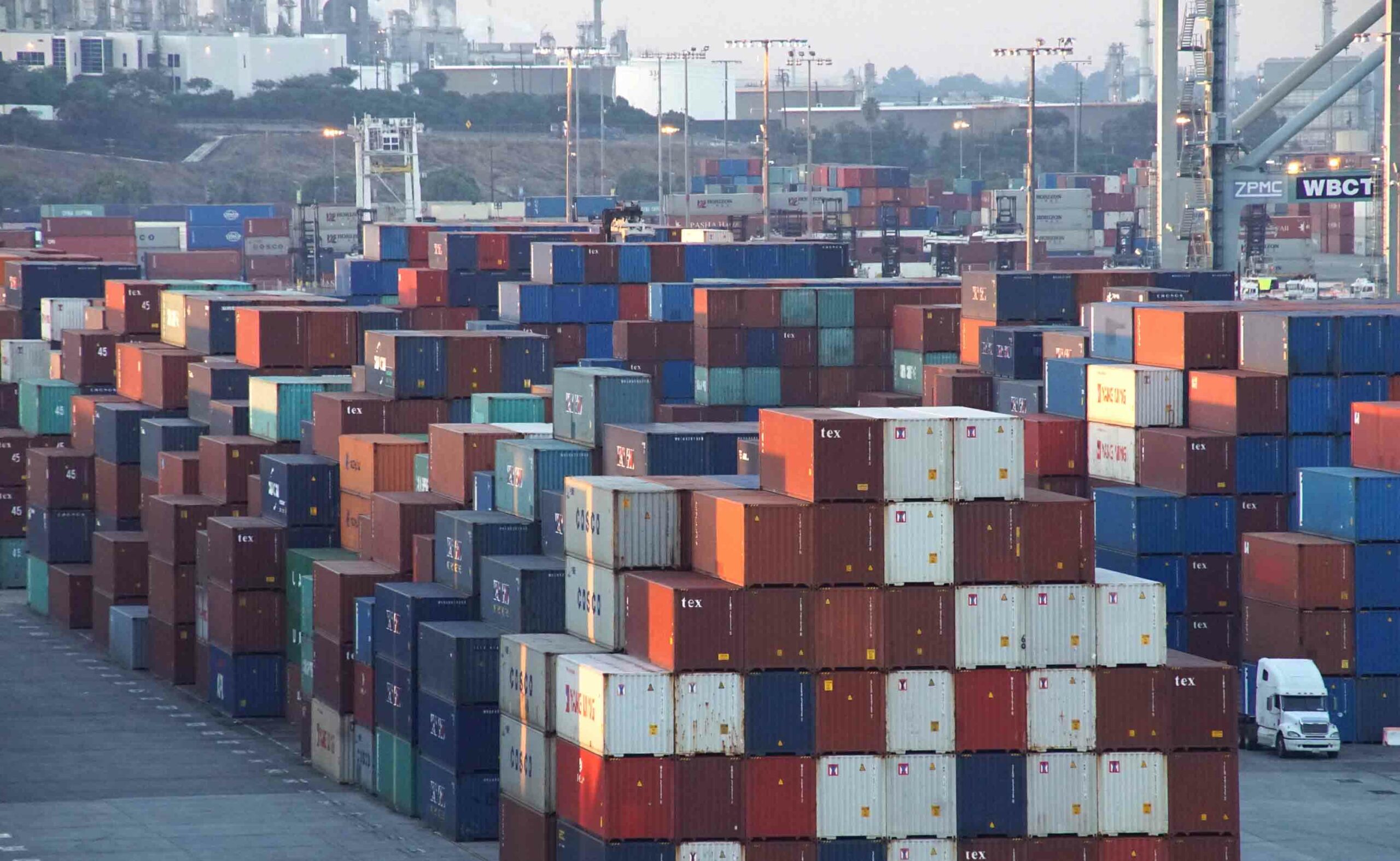A report conducted by the provider of supply chain visibility platform for shippers and logistics firms, Project 44, has shown that the worth of cargo waiting outside the US West Coast ports in 2021 has racked up millions in interest due to port congestion.
Data from the Ports of Los Angeles (POLA) and Long Beach (POLB) as of 7 January have shown that 103 vessels, expected to deliver approximately 147,000 TEU at these two ports, were either waiting in a zone of 74 km or loitering, drifting, or slow steaming heading to the ports.
With the two major Californian ports handling roughly 40% of US imports, delays in Los Angeles and Long Beach impact significantly the natioanl economic growth.
The containers destined for discharge at these two ports were said to carry cargo valued at around US$5.9 billion, according to project44’s data.
“Between January and November 2021, an estimated worth of cargo of US$238 billion experienced significant delays outside these ports,” pointed out the company.
These numbers help explain how the port congestion is driving up prices at the register, and how low-interest rates are allowing companies to add additional inventory in the supply chain at low cost.
“With interest rates at historic lows, the cost of holding more inventory is lower than you’d expect,” said Josh Brazil, vice president of supply chain insights at Project44, and went on to point out that while this low trade financing environment is helpful for shippers, it only exacerbates the congestion issues.
“While more inventory might seem like a good short-term solution, the industry also desperately needs more visibility, better cargo management, and infrastructure and process improvements,” added Brazil.
Los Angeles port’s data analysed by project44 showed that during 2021, an average of 540,255 TEU per month were waiting outside the port, with an average of 377 container ships per month waiting at anchorage for a berth.
With an average cargo value of US$40,000 per TEU, against a 3.2% cost of financing, shippers paid around US$106 per TEU per month, according to data from Project44 and the British investment banking company, HSBC.

Given an average transit time between major Chinese ports and Los Angeles of 60 days, shippers incurred an average of two months of interest payments on goods travelling by sea.
“This translates into almost US$321 million in total additional interest between the months of January and November 2021, which – while significant – is a small fraction of the total cost of goods,” explained Project44.
![]()

Pre-pandemic transit time from Chinese ports to Los Angeles was 16 days + 6 days until clearance. Now, transit time has gone up to around 60 days based on LA port’s current average days awaiting berth 17.6 days, according to the digital freight forwarding platform, Shifl and the port.
With interest rates at historic lows, companies could finance a surplus amount of inventory and essentially store it at sea for two months, and while this might not be entirely deliberate, the congestion helped companies avoid storage costs on the excess inventories.
“Even though shippers paid interest-related penalties on freight stranded at sea, the costs were diminutive compared to storing that inventory on land,” commented a representative from Project44.

Financing costs didn’t stop after unloading, while import container dwells average eight days portside, shippers racked up millions more in interest.
Hence, with the same low-interest dynamic at play, shippers were able to shoulder these expenses at relatively low costs, often passing these additional costs along to customers.

According to Project44, shippers faced a domino effect of disruptions that exceeded their forecasted shipping delays.
Particularly, even though shippers had foreseen shipping delays and sent in orders by as early as June and July of 2021 to bolster inventories in time for the holiday shopping season, this was not ultimately enough, due to the 103 vessels stranded with cargo (a portion of which must have gone out in sales in December) by 7 January.
Successive disruptions in the second half of the year, including multiple Covid outbreaks across Asia, major terminal closures in Yantian and Ningbo, and the Suez Canal incident, exacerbated supply chain bottlenecks.
“However, the holiday shopping season did manage to satisfy consumer demand, even beyond expectations,” highlighted Project44.
“This leads us to believe that businesses over-ordered merchandise (considering a chunk of it still remains stranded in/around ports), which could be used to replenish depleted inventories or be marketed at a discount in the months ahead,” added the company.
The port congestion issue is anticipated to continue to impact restocking cycles this quarter, alongside the Omicron breakout and the impending Chinese New Year closures in China.
Author: Vivi Dara
Photo: steve estvanik / Shutterstock.com


